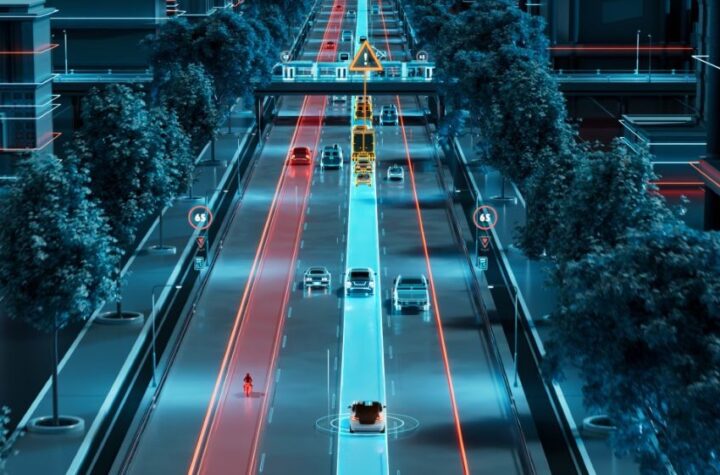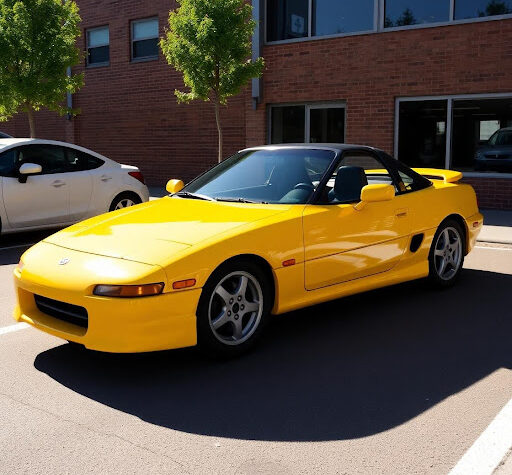

OEMs and Tier suppliers are focusing on developing intuitive human-machine interfaces (HMI) as we shift the way we interact with our vehicles from driving to piloting a self-driving vehicle.
One of the leaders in the development of this technology is Elektrobit (EB), which recently released EB GUIDE 6, a software toolkit that allows automakers, Tier 1 suppliers and developers to design and develop sophisticated, customized HMI systems more easily, quickly and cost-effectively. EB GUIDE 6 is an updated version of its pioneering HMI toolkit for the development of multimodal in-car screens with advanced graphics, plus voice-, touch screen- and gesture-based controls.
The EB Assist Electronic Horizon won Best Safety (ADAS) solution during the June TU-Automotive Detroit 2015 conference and exhibition in Novi, Michigan. This is the second consecutive year EB’s driver assistance technology has won the award. EB Assist Electronic Horizon provides accurate street map and topographical data for predictive driver assistance features such as night vision, curve speed warning and traffic sign recognition or range determination for e-cars and automated driving functions. “This award recognizes EB’s long-standing commitment to deliver the most innovative in-car driver assistance and safety systems for the automotive industry,” says Alexander Kocher, president of EB’s Automotive Business Segment. EB is one of the few automotive suppliers to offer horizon software that combines navigation and driver assistance systems. This allows carmakers to deliver more precise, easier-to-use and more capable systems for consumers, according to the company.
“Over the past 25 years we’ve established deep relationships with carmakers and suppliers. We understand the automotive industry, having worked with carmakers such as BMW, Daimler, Ford, GM, Volkswagen Group, Volvo and more on their global technology. Our relationships with carmakers and suppliers allows us to stay on top of new innovations and incorporate their technology into our products early in the development phase. We’ve worked on projects of all types and sizes, playing supporting and leading roles,” says the company in a statement. In June 2015 EB sold its automotive business to Continental for €600 million. The transaction comprises the sale of Elektrobit Automotive and its subsidiaries including a jointly owned company between EB Automotive and Audi Electronics Venture. Continental’s intention is to keep EB Automotive’s business as a separate unit.
EB Automotive is an international supplier of embedded software solutions and services for the automotive industry.
EB’s software products are: EB street director navigation software, EB GUIDE HMI development and speech dialogue platform, EB tresos product line of software components used in ECUs and tools for their configuration, and EB Assist, an extensive product line with tooling and a software development kit for driver assistance solutions. These software products generate license fees, often combined with supply of R&D services for customized solutions.
EB and Audi’s subsidiary, Audi Electronics Venture (AEV), are partners in e.solutions that is currently developing infotainment software and provides systems engineering and systems integration services for Volkswagen Group car models. This company has also been acquired by Continental.
Automotive Industries asked Matthias Hampel, Head of Technology and Innovation HMI at EB to tell us more about the breakthrough in HMI technology.
Hampel: EB GUIDE 6 is a new version of our pioneering, multimodal HMI toolkit for the development of in-vehicle infotainment head unit and instrument clusters with advanced graphics, plus voice-, touch screen- and gesture-based controls. EB GUIDE 6 is a software tool that allows automakers, Tier 1 suppliers and developers to design and develop sophisticated, customized HMI systems more easily, quickly and cost-effectively.
AI: How will it make development easier for automotive manufacturers?
Hampel: EB GUIDE 6 represents a complete redesign of the EB GUIDE HMI development toolchain, integrating new features such as an easy-to-use graphical user interface that will make it usable by both engineers and designers alike. It easily integrates into existing design and development processes and complies with the Automotive SPICE standard.
The Windows-based toolset supports all development phases — executable specifications, modeling, rapid prototyping, simulation and target deployment—and is multi-user capable, so global teams can work on the same HMI model, at the same time. Runtime software is available for a wide range of operating systems, including Windows, QNX, Linux and Green Hills Integrity and hardware platforms.
AI: What cost savings does it offer?
Hampel: EB GUIDE helps reduce development time and costs by enabling existing models, animations, widgets and other assets to be reused across different software models, greatly simplifying the process of creating a consistent, yet easily customizable, look and feel. The software toolchain allows users to easily branch and merge software models, and it automatically integrates models created using previous versions of EB GUIDE software. Users of EB GUIDE 5.5x are able to seamlessly migrate their projects to EB GUIDE 6. In addition, we’re making available a free, downloadable version, EB GUIDE Studio 6, so there is not cost at all to developing with our tools.
AI: How do you see the future of automotive HMI evolving?
Hampel: Automotive HMI is constantly evolving and plays a key role in the shift toward fully autonomous and self-driving vehicles. Automakers are using HMI to develop distinct and sophisticated driving experiences, allowing drivers to interact with their vehicles in an intuitive way, making it easy for them to access information and control the vehicle. They are using natural voice, gesture control and other approaches to make it possible for drivers to interact without distraction.
AI then asked Manuela Papadopol, director of global marketing, EB Automotive how the company is adapting its marketing in the new era of mobility.
Papadopol: The role of marketing has changed from a decade ago, when it was all about building inventory and unloading it to the consumer through promotion. It now begins begins with consumers – learning about their interests, habits and needs, and then delivering products and services to match their interest. It is all about personalized experiences. As we develop new technologies we’re embarking on a similar process to educate consumers so they will later understand the value they receive through the new products and services. Because no matter how useful the technology is, if consumers cannot use it, it will result in consumer avoidance and slow adoption, at best. AI: How does your company manage to keep high levels of customization across different global regions?
Papadopol: EB Automotive works very closely with our customers to develop software that maps to regional needs and interests. We also look at over the air update (OTA) as the most important feature that all vehicles will have in the next decade. However, you cannot have updates without safety and you cannot have safety without security. With this in mind, we released an updated version of EB GUIDE, our cutting-edge HMI software toolkit, with features that enable OEMs to create a consistent and easily customizable look and feel. User interfaces and experiences along with driver assistance technologies will be key differentiators for car makers, and will build brand value. As such, the critical role of the in-car HMI is evolving with every new model and EB GUIDE enables automakers to efficiently create customized and branded user interfaces.
AI: Tell us a little about how EB Automotive’s new HMI technology is being received by automotive manufacturers.
Papadopol: EB GUIDE has been well received among automakers. Our goal is to provide them with software that allows them to design and develop sophisticated, customized HMI systems more easily, quickly and cost-effectively. Automakers today are under pressure to innovate and iterate – which means moving forward while re-using the best of existing solutions. EB GUIDE 6 makes it possible for them to this by allowing the rapid creation of custom user interfaces that can be used across product lines and be modified or updated as needed. We see the opportunity designers and developers bring to the consumer electronics world, and we at EB would like to expand that opportunity to the world of automotive, especially as we spend longer periods of time in our cars.
AI




More Stories
TomTom’s Orbis Maps with 3D Lane geometry set new standards for mapping precision
Accelerating The Development of Hydrogen Vehicles & Infrastructure – Europe’s Biggest Players Meeting at Premier Event
Automotive IQ Announces the 15th Annual Automotive Functional Safety Week 2025